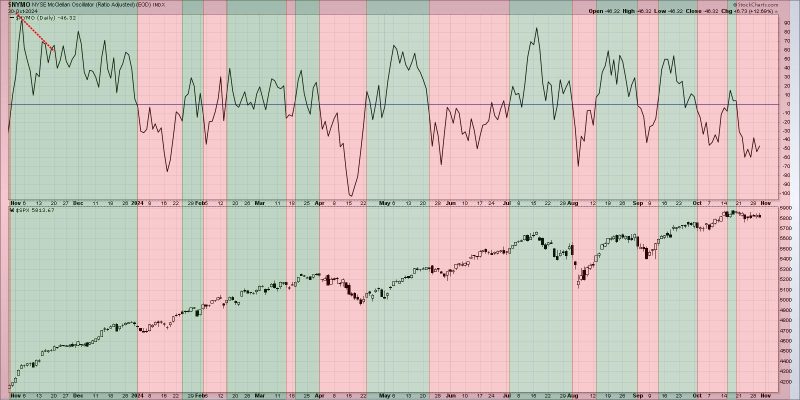Breadth divergences have long been a topic of interest among market analysts and traders as they are often considered a potential indicator of shifts in market sentiment and future price movements. A breadth divergence occurs when the performance of a broad market index, such as the S&P 500, differs from the performance of the individual components within that index. In other words, while the index itself may be hitting new highs, a significant portion of the underlying stocks may not be following suit.
One key aspect of breadth divergences is the insight they can provide into the overall health of the market. When a market index reaches new highs but is not supported by a strong participation of individual stocks, it can be seen as a warning sign of underlying weakness. This lack of broad-based participation may indicate that only a handful of stocks are driving the index higher, which could make the rally more vulnerable to a sudden reversal.
In the current bull market, some analysts have pointed to the presence of breadth divergences as a potential signal that the rally may be losing steam. As the S&P 500 continues to climb, there are concerns that the participation of individual stocks is not keeping pace, leading to a growing disconnect between the index and its components. This divergence raises questions about the sustainability of the current market uptrend and whether it can be maintained in the face of weakening breadth.
Historically, breadth divergences have been associated with market turning points. While they are not always a foolproof signal of an impending market correction, they can serve as a valuable warning sign for investors to exercise caution and reassess their risk exposure. In some cases, breadth divergences have preceded significant market downturns, highlighting the importance of monitoring the internal dynamics of the market beyond just looking at headline indexes.
It is essential for investors to pay close attention to breadth divergences and consider them in conjunction with other indicators and market signals. While breadth divergences can be a valuable tool for assessing market sentiment, they should not be relied upon in isolation to make investment decisions. A comprehensive analysis of market internals, technical indicators, and macroeconomic factors is crucial for gaining a deeper understanding of market conditions and making well-informed investment choices.
In conclusion, breadth divergences can offer valuable insights into the underlying strength of a market rally and serve as a cautionary signal for investors. While the presence of breadth divergences in the current bull market may raise concerns about its sustainability, investors should approach this indicator as part of a broader toolkit for assessing market conditions. By staying vigilant and incorporating a holistic approach to analyzing market dynamics, investors can better navigate the complexities of the market and make informed decisions to protect and grow their portfolios.

